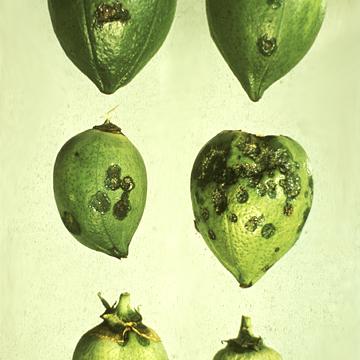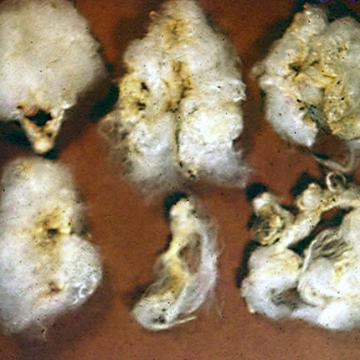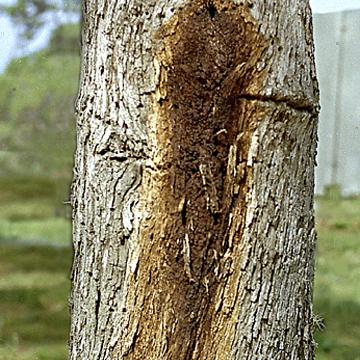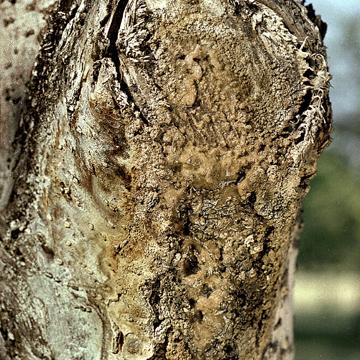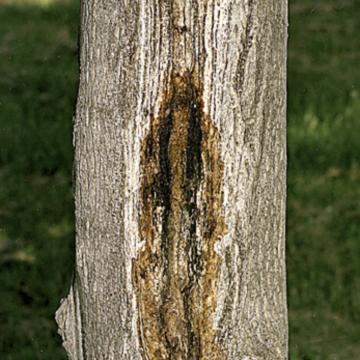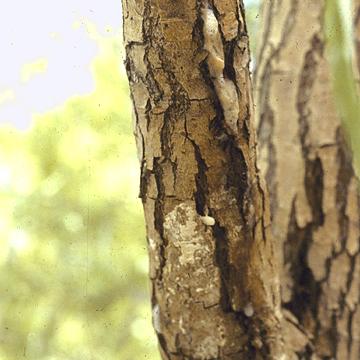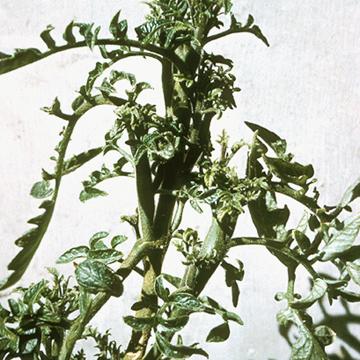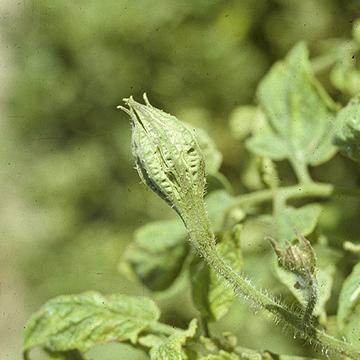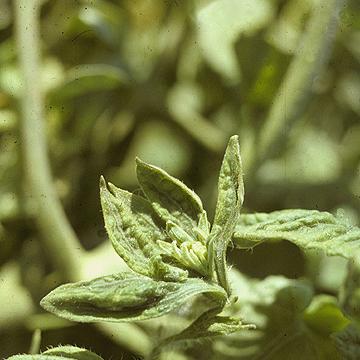DISEASE: Bacterial blight (Boll rot)
HOST: Cotton
Boll rot first appears as raised, water-soaked lesions, which become sunken and turn brown to black with time.
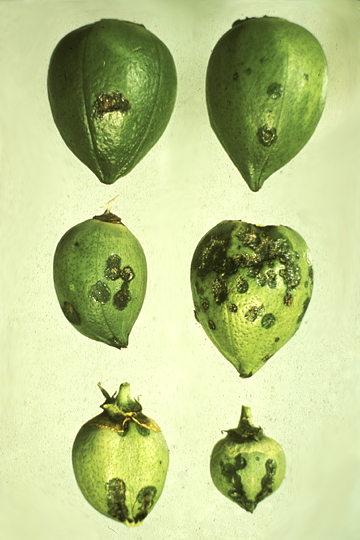
Bacterial blight (Boll rot) | Cotton
DISEASE: Bacterial blight (Boll rot)
HOST: Cotton (Gossypium barbadense)
PATHOGEN: Xanthomonas citri subsp. malvacearum
PATHOGEN SYNONYM: Xanthomonas campestris pv. malvacearum
SOURCE: A. Hayward
DISEASE: Bacterial blight (Boll rot)
HOST: Cotton
Infection of bolls causes premature opening and increased susceptibility to secondary, saprophytic microorganisms that cause rot. Note discolored cotton.
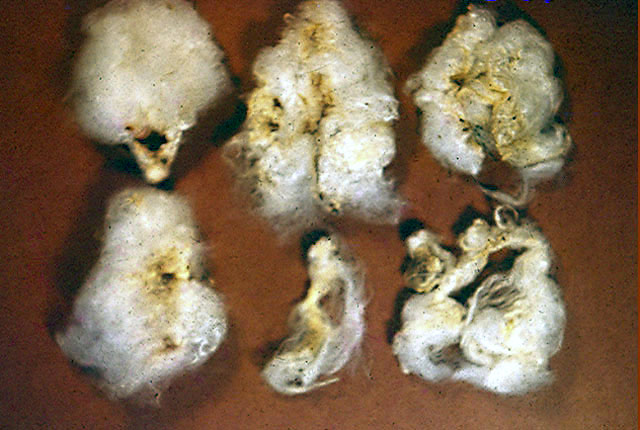
Bacterial blight (Boll rot) | Cotton
DISEASE: Bacterial blight (Boll rot)
HOST: Cotton (Gossypium barbadense)
PATHOGEN: Xanthomonas citri subsp. malvacearum
PATHOGEN SYNONYM: Xanthomonas campestris pv. malvacearum
SOURCE: APS
DISEASE: Slime flux
HOST: Casuarina
Slime flux occurs on a number of tree species and is always associated with bacteria and yeast. However, the causal agent has not been identified.
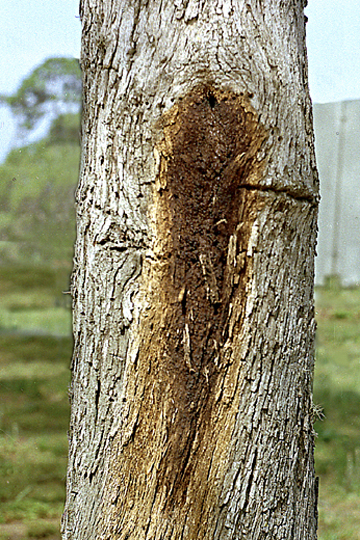
Slime flux | Casuarina
DISEASE: Slime flux
HOST: Casuarina (Casuarina equisetifolia)
PATHOGEN: Causal agent unknown
SOURCE: W. Sinclair
DISEASE: Slime flux
HOST: Elm
Although bacteria are associated with slime fluxes of many trees, the causal agents have not been identified.
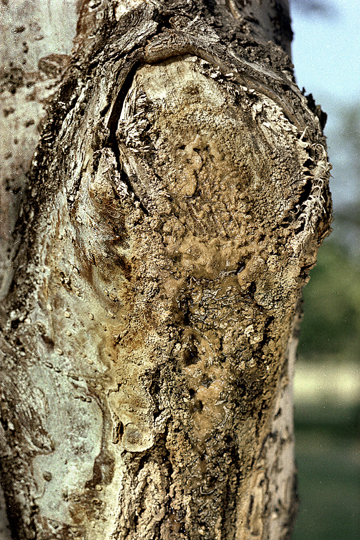
Slime flux | Elm
DISEASE: Slime flux
HOST: Elm (Ulmus pumila)
PATHOGEN: Causal agent unknown
SOURCE: W. Sinclair
DISEASE: Slime flux
HOST: Maple
The causal agent of slime flux has not been identified.
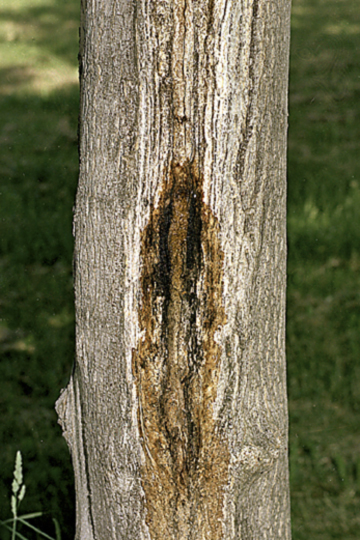
Slime flux | Maple
DISEASE: Slime flux
HOST: Maple (Acer saccharum)
PATHOGEN: Causal agent unknown
SOURCE: W. Sinclair
DISEASE: Slime flux
HOST: Willow
Foam at site of infection. Slime fluxes are common but the causal agent has not been identified.
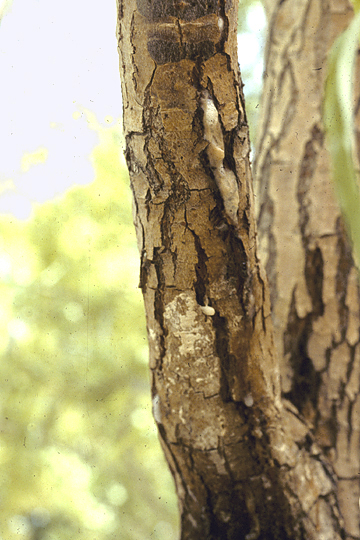
Slime flux | Willow
DISEASE: Slime flux
HOST: Willow (Salix sp.)
PATHOGEN: Causal agent unknown
SOURCE: S. Thomson
DISEASE: Tomato big bud
HOST: Tomato
Characteristic symptoms are swollen, apical stems and stunted leaves. Apical stems are generally thickened and assume a stiff and erect growth habit. Internodes are shortened and flower buds are greatly enlarged.
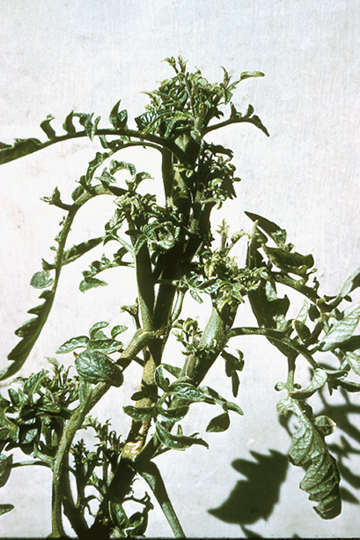
Tomato big bud | Tomato
DISEASE: Tomato big bud
HOST: Tomato (Lycopersicon esculentum)
PATHOGEN: 'Candidatus Phytoplasma asteris'
PATHOGEN SYNONYM: Phytoplasma Aster yellows group
SOURCE: D. Teakle
DISEASE: Tomato big bud
HOST: Tomato
Symptoms are enlarge sepals that do not separate. Flower buds stay green and do not develop into fruit. Leaves are small and chlorotic.
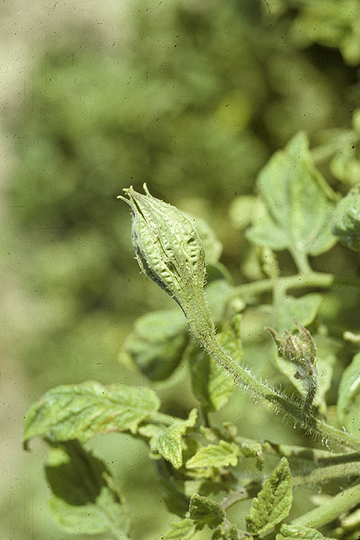
Tomato big bud | Tomato
DISEASE: Tomato big bud
HOST: Tomato (Lycopersicon esculentum)
PATHOGEN: 'Candidatus Phytoplasma asteris'
PATHOGEN SYNONYM: Phytoplasma Aster yellows group
SOURCE: S. Thomson
DISEASE: Tomato big bud
HOST: Tomato
Abnormal flower bud with greatly enlarged sepals. Sepals do not separate, fruit is not produced, and apical growth is upright.
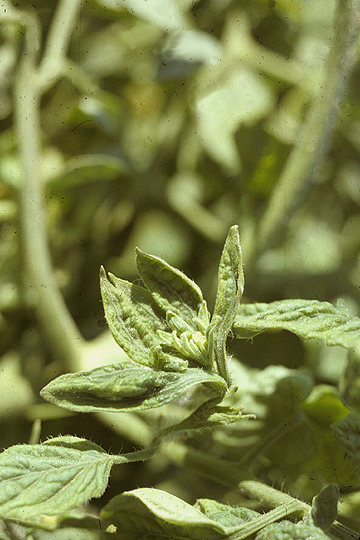
Tomato big bud | Tomato
DISEASE: Tomato big bud
HOST: Tomato (Lycopersicon esculentum)
PATHOGEN: 'Candidatus Phytoplasma asteris'
PATHOGEN SYNONYM: Phytoplasma Aster yellows group
SOURCE: S. Thomson


